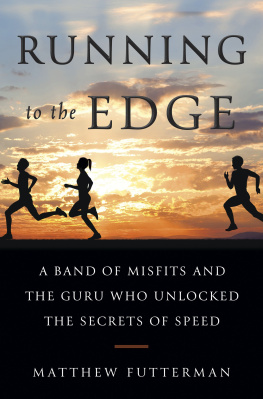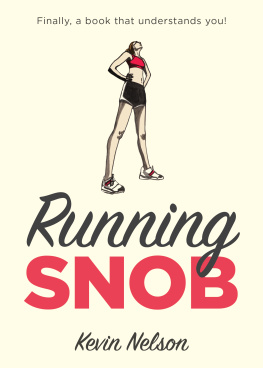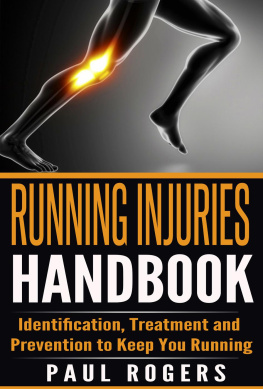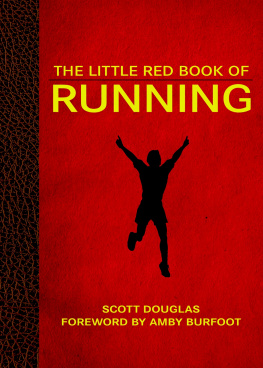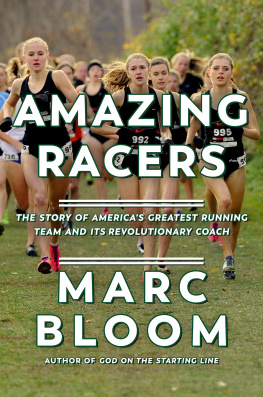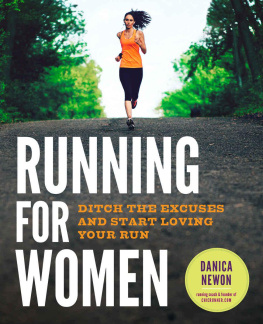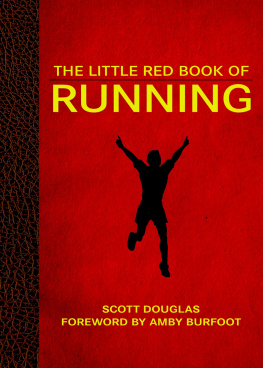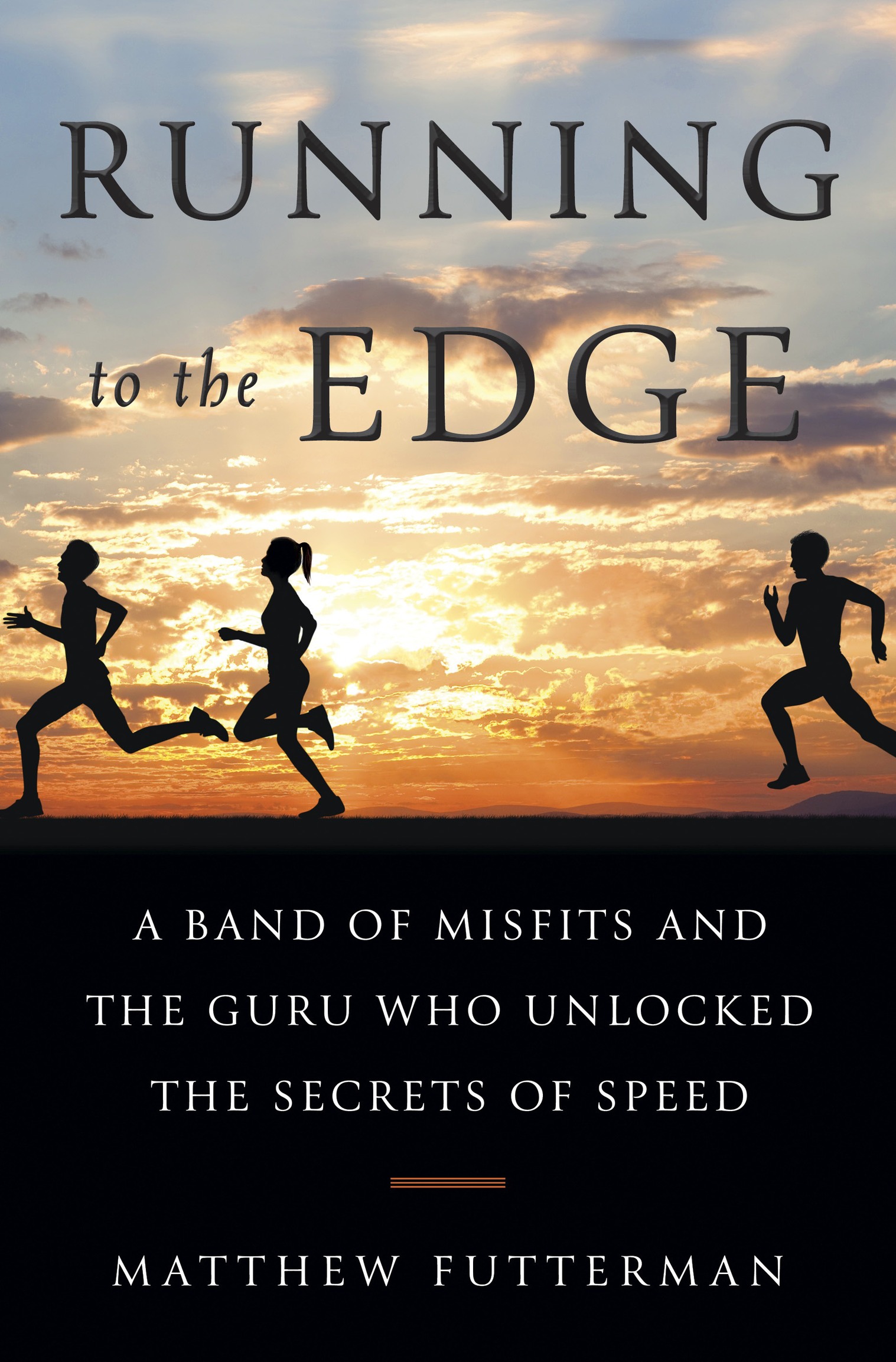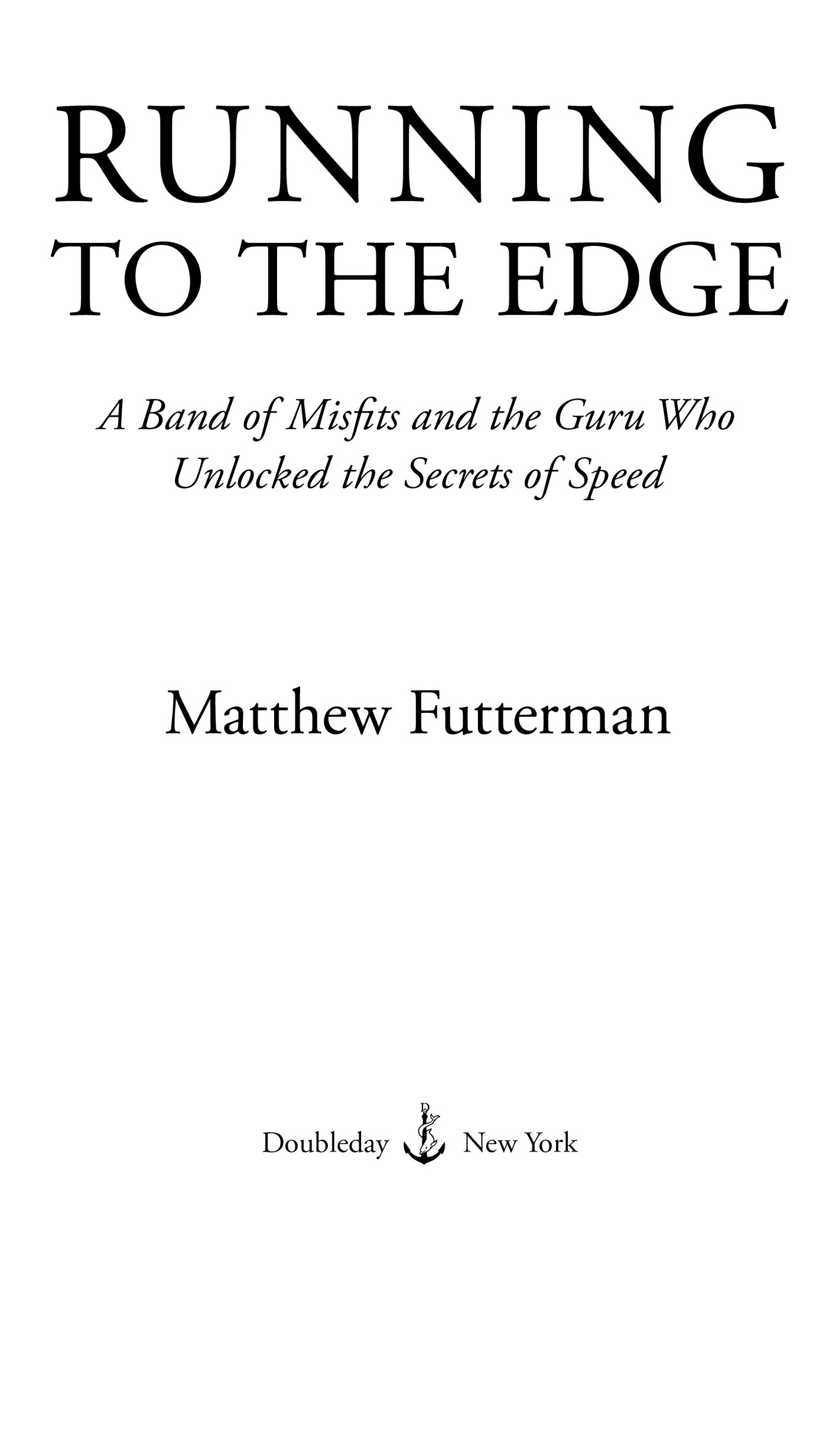Also by Matthew Futterman
Players: How Sports Became a Business
Copyright 2019 by Matthew Futterman
All rights reserved. Published in the United States by Doubleday, a division of Penguin Random House LLC, New York, and distributed in Canada by Penguin Random House Canada Limited, Toronto.
www.doubleday.com
DOUBLEDAY and the portrayal of an anchor with a dolphin are registered trademarks of Penguin Random House LLC.
Photograph on page viii courtesy of Robert Lusitania. Photograph on page 277 courtesy of Marathonfoto.
Cover photograph by Andrey Burmakin / Shutterstock
Cover design by John Fontana
Library of Congress Cataloging-in-Publication Data
Names: Futterman, Matthew, author.
Title: Running to the edge : A band of misfits and the guru who unlocked the secrets of speed / by Matthew Futterman.
Description: First edition. | New York : Doubleday, 2019.
Identifiers: LCCN 2018049020 | ISBN 9780385543743 (hardcover) | ISBN 9780385543750 (ebook)
Subjects: LCSH: RunningTraining. | Running speed.
Classification: LCC GV1061.5 .F88 2019 | DDC 796.42071dc23
LC record available at https://lccn.loc.gov/2018049020
Ebook ISBN9780385543750
v5.4
ep
For my girls

Authors Note
I wrote this book because I have long been fascinated by something I do not possess, which is speed. Every runner I have ever knownincluding an eighty-five-year-old woman in northern California who ran seven-hour marathons, and Eliud Kipchoge, the otherworldly Kenyan who runs them in just over twoshares a desperate desire to run faster.
I started searching for a story that might explore what drives so many of us, from the very fast to the very slow, to begin, or end, or break up our days by heading out to the streets or the trails to run some miles. Sometimes we dont even know how far we will go when we start. And isnt that the beauty of it?
Then I saw a picture of a running team from the mid-1970s. They had scraggly hair and hopeful eyes, ridiculous (or amazing) uniforms with a toad logo, and the kind of lean physiques that only thousands of hours of roadwork can produce. I knew their coach, Bob Larsen, from his work with the marathon champion Meb Keflezighi, but I had no idea this was where it all began.
Those guys called themselves the Jamul (pronounced HA-mool) Toads. They looked a little nuts, which is how most people felt about nearly every runner who logged heavy mileage back then. I had a hunch they embodied the obsessive and rebellious spirit at the roots of this strange endeavor and that those runners and their coach could help me understand why we run. As I unearthed their story, I realized it went so far beyond what I expected.
I like to think the spirit of those Toads, so visible on that photograph, is timeless. It lives on today at every level of this beautiful pursuit.
Matthew Futterman
November 2018
It is the brain, not the heart or lungs, that is the critical organ.
Roger Bannister Miler. Neurologist.
Contents
Prologue
Athens, Greece, August 29, 2004
Bob Larsen has lost his mind.
Thats been the word around the campfire in running circles for a little while now. For three years hes been dragging runners up to Mammoth Lakes in Californias southern Sierras, preaching the benefits of running and sleeping so far above sea level. There, and only there, they will find what they need to avoid getting laughed at by all those Africansthe Kenyans and Ethiopians and everyone else at the top of the game, runners who barely consider Americans to be participants in the same sport anymore. Judging from the results of the past couple of decades, they really have no reason to.
And yet, Bob Larsen believes as strongly as he believes anything that after these Olympic Games they will. Thats why everyone who knows anything about running is certain that Bob Larsen has cracked. Sure, he spent the 1970s figuring out how to run so far, so fast, before anyone else had cracked the code. Then he produced all those national champions and Olympians at UCLA in the 1980s and 1990s. But this idea that runners from his part of the world can figure out how to keep up with the folks born and raised to be champions in East Africas highlands, well, that just seems a little loony.
Bob Larsen does not think sothough maybe it is, and maybe Larsen is a little loony himself. Case in point: He spent several days hunting for the coldest freezer in the Olympic Village, comparing set points and feeling inside them, searching for the one that will keep the ice vests he wants his marathoners to wear (until right before the starters pistol fires) as cold as possible. He finds the coldest one in the kitchen near the village dining hall. He finds this pushy New York woman who works there. She promises she can barrel her way through any obstacle. She gets the vests into the freezer the night before the race, and gets them to him the next day.
Bob could sense the eye rolls and the sideways glances from the other coaches when he told them of his quest for the perfect freezer. That was just fine with Larsen. This is how it was back in the 1970s, when he took that first group of hippie runners no one took seriously and he elevated them to national prominence. When no one sees you coming, you have them right where you want them.
For a moment one week earlier, on the middle Sunday of the Olympic Games, the running world stopped and had to reconsider Larsens sanity. On that day, American Deena Kastor came from way, way back in the womens marathon and sneaked onto the podium with the bronze medal, the first U.S. distance medal since 1984. Deena who? Kastor had been one of the runners Larsen and his partner in crime, Joe Vigil, started shuttling up to Mammoth Lakes a few years back, high in the Sierras. And here in Greece, she wore the ice vest to the start line, then raced the plan Larsen and her coaches had designed for this crazy, blazing hot Olympic marathon.
The course followed the trail that gave the race its namethe road from Marathon to Athens, the one Pheidippides ran to announce the Greek victory over the Persians. Pheidippides collapsed and died after delivering the message. To avoid that fate in the heat of the Athens summer, Kastors coaches told her to let everyone else fight for the lead early, and especially during that largely uphill stretch between miles 2 and 20. They bet the heat and the stress of the course would produce widespread panic among even the elite of the field. Panic produces mistakes. Let the others make those mistakes, and then pounce. They did, and then she did.
Still, that was the womens race, the Larsen skeptics whispered. The womens field lacked the depth and firepower of the mens competition. Kastor had done well, but the African men had proven themselves an entirely different life form. Unapproachable.
Larsen can feel those doubts, the subliminal snickering, as he rides to the start line with his prized protg, the twenty-eight-year-old Meb Keflezighi. Exiting the bus, Meb gets the ice vest pulled on tight. For ten years he has done nearly everything Larsen has told him to do, and he isnt about to stop now. Larsen let him come to Athens for the Opening Ceremony. Then he put Meb on the first plane back to a hotel in Crete, where they had set up a base camp for training in the weeks ahead of the Games.

